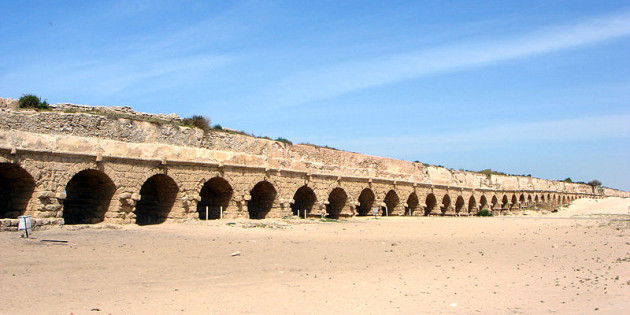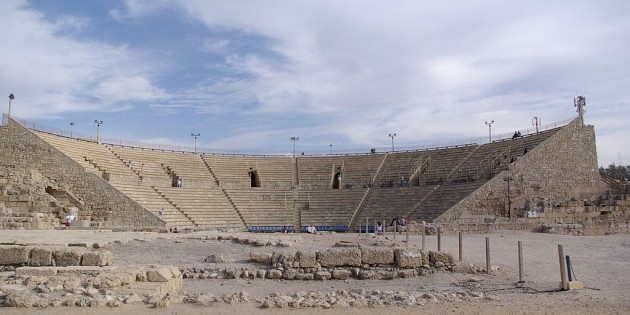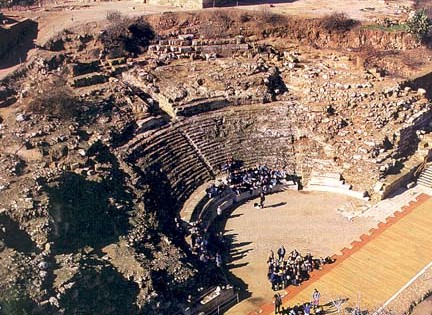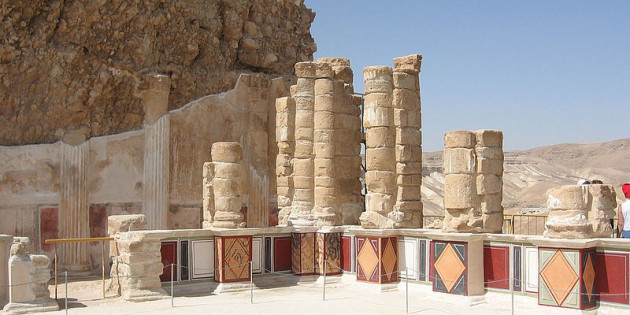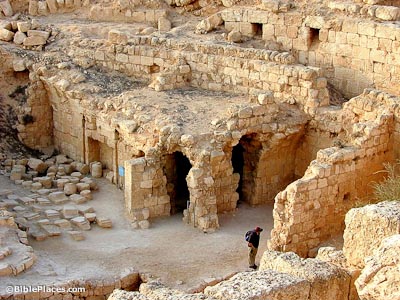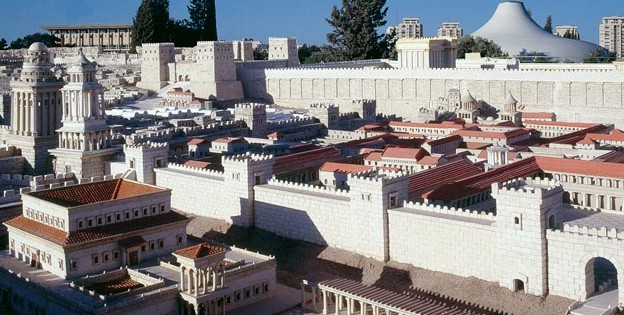Home » From Herod the Great and the Herodians to Direct Roman Rule
From Herod the Great and the Herodians to Direct Roman Rule
Herod no doubt built this great harbor to satisfy a practical need, for there was no other sheltered anchorage along the route from Alexandria, in Egypt, to the ports of Syria and Asia Minor. Herod also expected to bring in a nice profit from harbor tolls and customs that would help finance his building schemes. […]
Since Caesarea had no rivers or springs, drinking water for the prospering Roman city was brought via a unique high-level aqueduct, originating at the nearby Shuni springs, some 7.5 km northeast of Caesarea.
Theater built by Herod the Great in the port city Caesarea Maritima, 1st century BCE.
A 4,000-seat theater was first excavated at Sepphoris in 1931 and has been the subject of considerable academic debate ever since. Some scholars believe that Jesus himself may have sat on the theater’s semicircular limestone benches. But Chancey and Meyers doubt that the theater was constructed before the end of the first century C.E. If […]
The fortress of Masada was built in the year 30 BCE by King Herod, whose architectural feats have left their mark throughout the country.
In the winters of 1963–1964 and 1964–1965, Israel’s most illustrious archaeologist, Yigael Yadin, led excavations at Herod the Great’s mountain palace-fortress of Masada, overlooking the Dead Sea.
Herod the Great built palaces for himself on the mountain and fortified Masada between 37 and 31 BCE.
The palace at Herodium consisted of four towers of seven stories, a bathhouse, courtyards, a Roman theatre, banquet rooms, a large walkway (“the course”), as well as extravagant living quarters for Herod and guests.
Photo courtesy of Bibleplaces.com. Another symbol of Herod’s extravagance in building, this full-size Roman bathhouse had the typical design of four rooms – apodyterium (changing room), tepidarium (stretching room), caldarium (steam room) and frigidarium (cold bath).
This 50:1 scale model, covering nearly one acre, evokes ancient Jerusalem at its peak, meticulously recreating its topography and architectural character in 66 CE, the year in which the Great Revolt against the Romans broke out, leading to the destruction of the Temple and the city in the year 70 CE.


